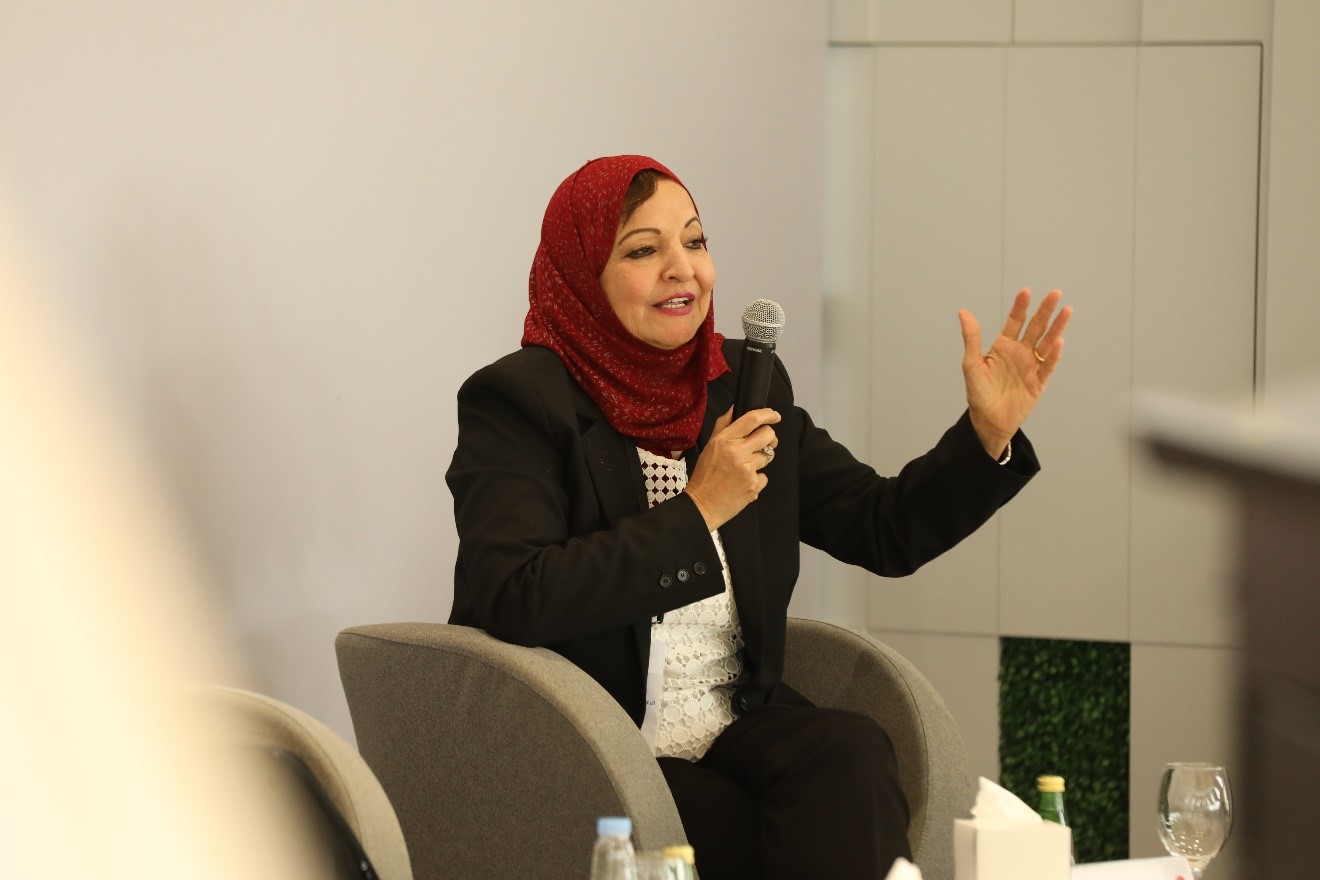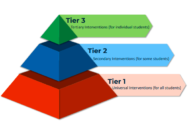By Professor Nagwa A Meguid
meguidna@yahoo.com
The origin of autism is manifold, where epigenetics overlaps with the shared gene-environment etiologies through many pathways such as oxidative stress. The multifactorial origin of autism and the heterogeneity of the apparent endophenotypes prompt researchers to disentangle the complexity of autism. Since the disorder is highly heritable, the genetic predisposition is widely studied in autism. However, genetics alone couldn’t account for the pathophysiology of the disorder, and environmental factors and epigenetics share a considerable role in the manifestation of autism through some pathways such as oxidative stress.
We compared risk factor, dietary regimens and habits of 80 age matched healthy children with 80 individuals affected by autism. Caesarian section was the most common risk factor in autistics. All autistics had delayed Language while epilepsy was found in 10%. MRI changes noticed in the participants are delayed myelination of white matter which has negative impact on behavior. Nutritional and biochemical analysis of micro- & macronutrients showed low dietary intake and low serum calcium, magnesium, iron, B12 and selenium were significantly low in autistics. No correlation between their concentrations and the CARS score was found. On the other hand, we used qRT-PCR array to analyze the transcriptional profile of 84 genes involved in the oxidative stress pathway in the PBMCs of 80 autistic (25 severe and 55 mild/moderate autism) and 80 controls. Validation qRT-PCR assays filtered the 84 genes to showed that autistic patients exhibited transcriptional dysregulation of seven oxidative stress-regulating genes (GCLM, SOD2, NCF2, PRNP, PTGS2, GPX7, and FTH1) when compared to healthy subjects. Downregulation in : GCLM, SOD2, NCF2, PRNP, PTGS2, and FTH1 and upregulation in GPX7gene. We noticed that FTH1 gene exhibited a highly significant downregulation in severe autistics compared to mild/moderate or control group, suggesting a probable role of ferritin heavy chain associated with severity of autism. FTH1 (Ferritin heavy polypeptide 1) plays an essential role in iron homeostasis and alleviating oxidative stress. Our finding of the low mRNA expression of FTH1 in severe autistic patients may present a possible explanation for the reduced levels of serum ferritin and iron in autistic children that was reported in the literature. Since iron is essential for brain development, the current finding suggests a possible role of FTH1 gene downregulation in pathophysiology of autism. On clinical basis, severe autistic children in our study experienced a range of sleep fragmentation and frequent constipation, where the exact mechanism could be due to (low serum-ferritin). On the other hand, Nutritional and biochemical analysis results confirmed that different nutritional inadequacy was observed in Egyptian children with autistic disorder including Iron. No correlation between the ferritin, concentration and the CARS score was found. The evidence reported in the present study should recommend the importance of screening of the nutritional status of ASD children for nutrient adequacy to reduce these deficiencies by dietary means or by administering appropriate vitamin and mineral supplements. Nutritional intervention plan should be tailored to address specific needs. This study presents candidate biomarkers for possible diagnosis as well as targets for therapeutic intervention.
أسباب التوحد متشعبة حيث تتداخل الأسباب فوق الجينية مع الأسباب الجينية و البيئية من خلال مسارات عديدة مثل الإجهاد التأكسدي. تم عمل دراسة بمقارنة عوامل الخطر و النظم و العادات الغذائية لثمانين طفلاً طبيعياً و ثمانين طفلاً مصاباً بالتوحد. الولادة القيصرية أكثر عوامل الخطر شيوعاً بين أطفال التوحد و تأخر الكلام، بينما هناك 10% يعانون من تغيرات برسم المخ. وكشف تصوير الرنين المغناطيسي تأخراً في تكوُّن الميالنين بالمادة البيضاء في المخ مما يؤثر سلباً على سلوك الأطفال. أما تقييم التغذية و التحاليل البيوكيميائية فأظهر 23.8% من أطفال التوحد في مقابل %11.3 من المجموعة الضابطة يتناولون كمية قليلة من البروتين. و كذلك انخفاض الكالسيوم و الماغنيسيوم و الحديد و فيتامين ب 12 و السيلينيوم، كما انخفضت نسب هذه العناصر انخفاضاً احصائياً في مصل الدم. أوصت نتائج الدراسة بضرورة فحص الحالة التغذوية لأطفال التوحد للتأكد من كفاية العناصر الغذائية. على الجانب الآخر، استخدمنا تفاعل البلمرة المتسلسل الكمي لتحليل مستوى تعبير 84 جين مرتبطين بالإجهاد التأكسدي في ثمانين طفلاً مصاباً بالتوحد (25 توحد حاد و 55 توحد متوسط) مقارنة بثمانين طفلاً في المجموعة الضابطة. كشفت تجربة تفاعل البلمرة الكمي انخفاضاً في مستوى تعبير 7 جينات من أصل 84 جين في مجموعة التوحد : GCLM و SOD2 و NCF2 و PRNPو PTGS2 و TXN و FTH1. لاحظنا أن جين وحدات الفيرتين الثقيلة (FTH1) قد انخفض انخفاضاً معبراً احصائياً في أطفال التوحد الحاد مقارنة بأقرانهم في مجموعة التوحد المتوسط أو المجموعة الضابطة مما قد يشير إلى دوره المحتمل المرتبط بحدة أعراض المرض. و بالتالي تقدم هذه الدراسة دلالات حيوية ممكنة لتشخيص التوحد و أهدافاً للتدخل العلاجي.
Published in Biomarker Insights and in Metab. Brain Diseases Journals.
- Expression of Reactive Oxygen Species–Related Transcripts in Egyptian Children with Autism
- Nagwa A Meguid, Said A S Ghozlan, Magda F Mohamed, Marwa K Ibrahim, Noha G Bader El Din, Maha Hemimi, Mostafa K El Awady
- Dietary adequacy of Egyptian children with autism Spectrum disorder compared to healthy developing children.
- Nagwa A. Meguid, Mona Anwar, Geir Bjørklund, Adel Hashish, Salvatore Chirumbolo, Maha Hemimi & Eman Sultan: Dietary adequacy of Egyptian children with autism Spectrum disorder compared to healthy developing children.
By Professor Nagwa A Meguid
meguidna@yahoo.com
Dr Meguid is a professor of human genetics, Former Head of Human Genetics Unit, (NRC). Senior fellow of Yale University USA and Uppsala Sweden. Win outstanding L’Oreal UNESCO Award for women in Science for Africa . Awarded Arab Female Scientist Prize in Genetics by Arabian Gulf University. Awarded National State Award of Appreciation in Advanced Medical Science. Schowman Arab Award in Medical Science and Autism . She has used her expertise to identify and describe several novel genetic syndromes & gene discovery. She has more than 120 International publications. Supervising 75 theses. She is the head of the laboratory of research in DNA in behavioral disorders and Jury president L’OREAL-UNESCO awards.
- رئيس قسم الوراثة البشرية 1998 –2001 – رئيس قسم بحوث الأطفال ذوي الاحتياجات الخاصة بالمركز القومي للبحوث 2002-2011 – زميل مركز الوراثة-باسادينا-كاليفورنيا و جامعة أوبسالا- –قسم الوراثة- السويد و جامعة بالولايات المتحدة الأمريكية
- رئيس برنامج من اجل المرأة المصرية للعلم لزمالة مصر رئيسا للجنة التحكيم للبرنامج لجنة تقييم جوائز اليونسكو/لوريال اكاديمية البحث العلمي للباحثات الشابات
- رئيس لجنة تقييم جوائز الدولة التشجيعية للعلوم الطبية اكاديمية البحث العلمي 2023
- اول محكم عربي لجوائز اليونسكو الدولية في باريس ومحكم لجوائز برنامج المشرق العربي العالمات الشابات العرب اليونسكو/لوريال.
- جائزة لوريال/ اليونسكو للمرأة المتميزة في الوراثة و الاعاقة عن قارة أفريقيا و الشرق الأوسط عام –2002 / جائزة الدولة التقديرية في العلوم المتقدمة التي تخدم العلوم الطبية 2016 / جائزة الدولة للتفوق العلمي في العلوم المتقدمة 2008 – جائزة المركز القومي التقديرية في مجال العلوم الطبية عام 2011 / جائزة المركز القومي للبحوث للتميز في النشر العلمي أكثر من مائة بحث دولي / جائزة التميز ( نساء مبدعات في علوم الجينات) من جامعة البحرين كباحثة عربية متميزة في مجال الأمراض الوراثية. 2009 / جائزة الدولة التقديرية في مجال العلوم الطبية المتقدمة 2016. /جائزة عبد الحميد شومان للباحثين العرب في حقل العلوم الطبية والصحية لعام 2021
- أشرفت على 45 رسالة دكتوراة و 30 رسالة ماجستير في مجالات الوراثة والأمراض العصبية والطب والعلوم والصيدلة وغيرها . لها أكثر من 120 بحث منشور في الدوريات المحلية و العالميةً.
- قامت د. نجوى عبد المجيد عام 2002 بوضع الخطة البحثية لإنشاء قسم أكاديمي جديد بشعبة البحوث الطبية بالمركز تحت مسمى قسم بحوث الأطفال ذوي الاحتياجات الخاصة. هذا وقد حصل القسم تحت رئاسة سيادتها على تقدير أفضل قسم بحثي واستمرت سيادتها رئيسة للقسم حتى بلوغ للمعاش
- اكتشاف جين جديد تم نشره في مجلة Science وأوضحت دراستها أن لهذا الجين علاقة بزواج الأقارب والصرع.
- مؤسس ورئيس المجموعة البحثية لأمراض التوحد بالمركز القومي للبحوث / اكتشاف أمراض وراثية ومتلازمات نادرة جديدة تم نشرها بالدوريات العالمية والتي ساعدت في التعرف على الجينات المسببة تمهيداً للتدخل الجيني العلاجي المستقبلي / رئيس CONEM لأبحاث دماغ الطفل مصر.
























